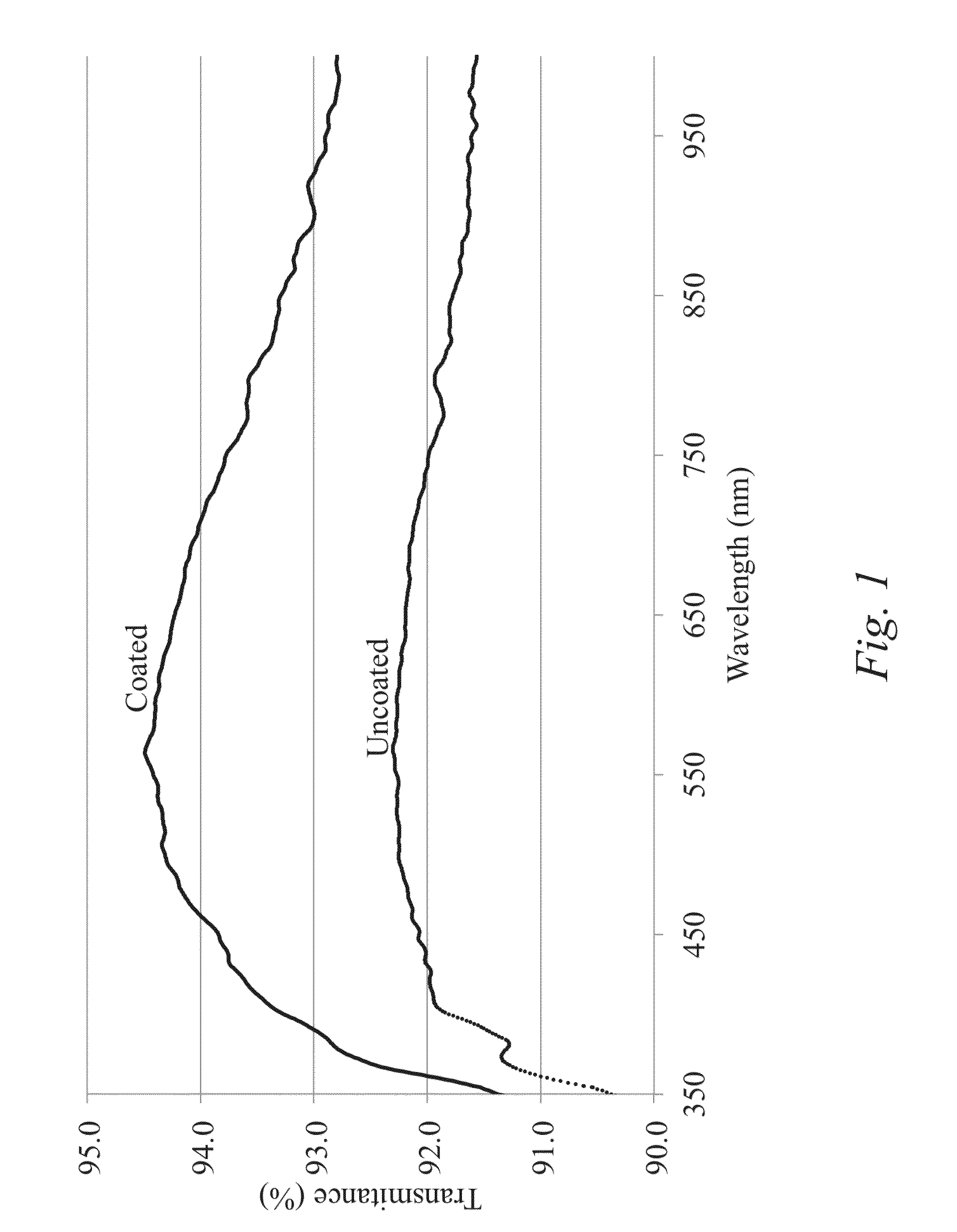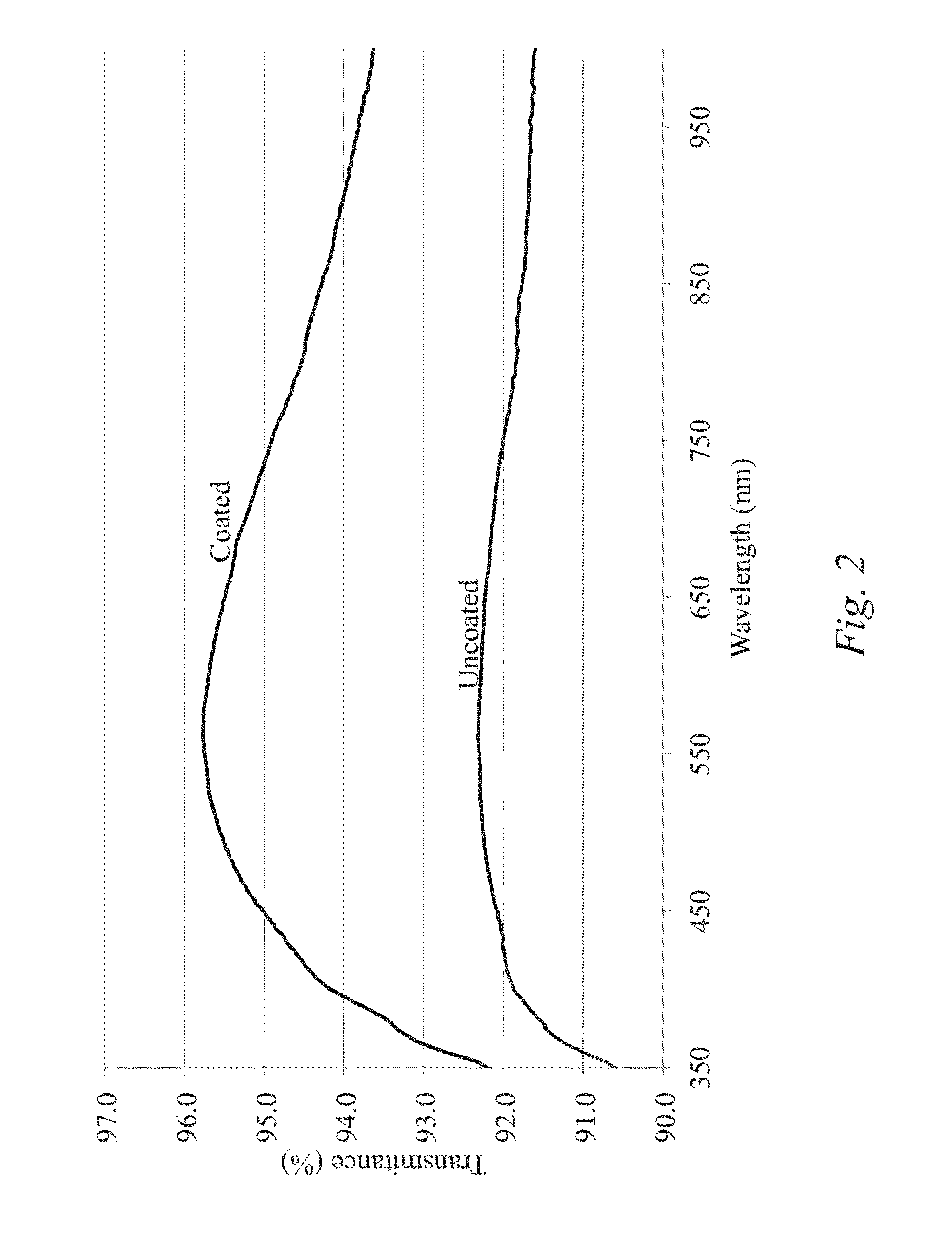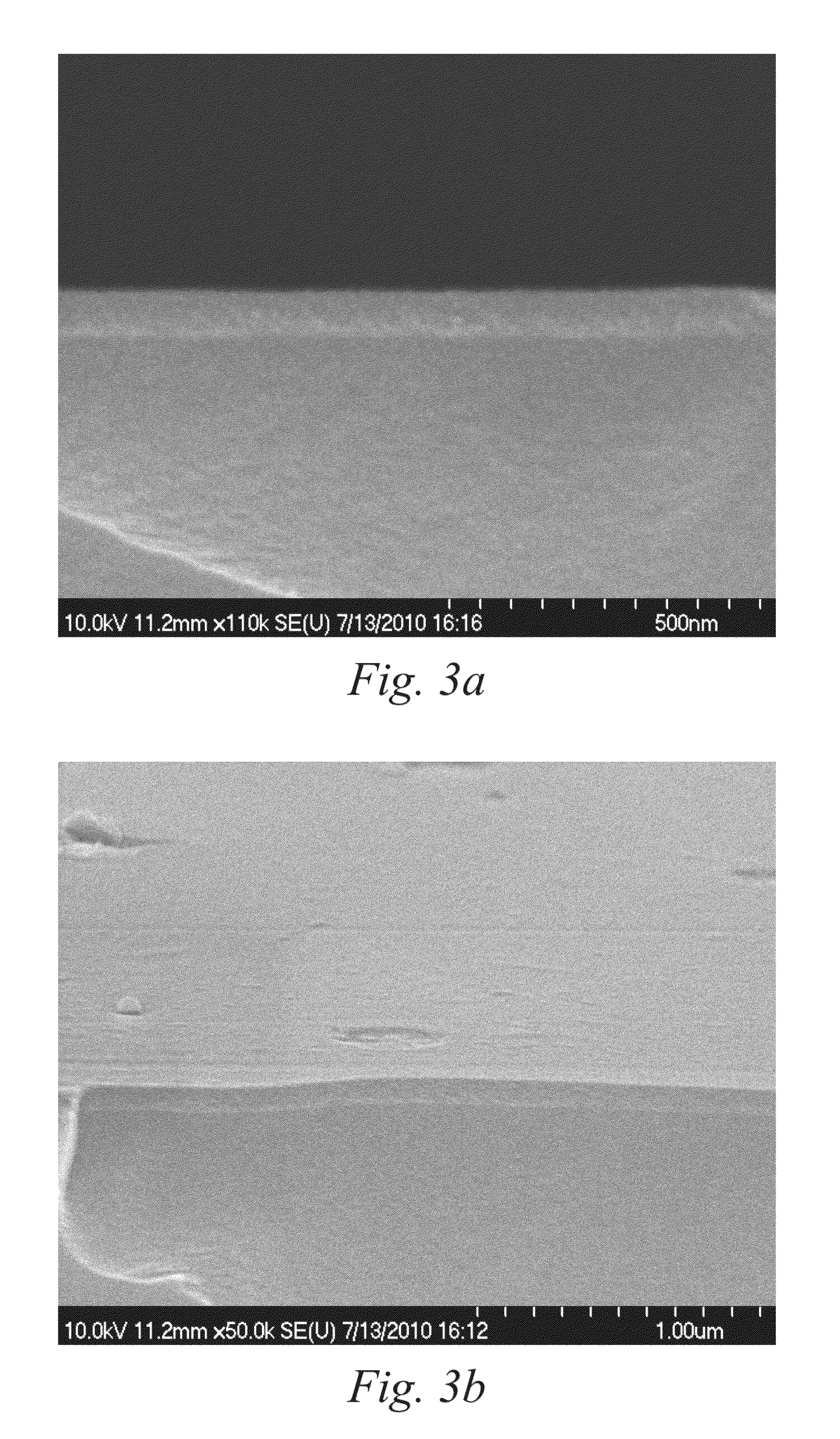Multi-layer coatings
a multi-layer coating and anti-glare technology, applied in the direction of anti-reflective coatings, other domestic articles, transportation and packaging, etc., can solve the problems of significant reduction of the optical transparency significant expenditure of human and financial resources associated with regular cleaning of such optical elements, and deposition of dirt on the surface of the optical element, so as to prolong the weatherability to heat and humidity and protect against ambient corrosives
- Summary
- Abstract
- Description
- Claims
- Application Information
AI Technical Summary
Benefits of technology
Problems solved by technology
Method used
Image
Examples
examples
[0254]The following describes various aspects of the coatings made according to certain embodiments of the disclosure. These examples should not be viewed as limiting. The general procedure used for the preparation of sol from a two-part process of acid catalyzed hydrolysis of methyltrialkoxysilane and tetraalkoxysilane is described as follows:
[0255]In an embodiment referred to as Example 5, the coating sol is prepared by charging a 500 mL flask with 354 g of IPA and 50 g of 0.04 M HCl. After stirring @ 100 rpm at RT for short time (˜1 min), 4.37 g (0.0321 moles) of methyltrimethoxysilane (MTMOS) is added to the mixture. The mixture is stirred at RT for 30 min followed by addition of 7.08 g (0.034 moles) of tetraethoxysilane (TEOS). The final mixture is stirred at RT for 30 min. This mixture is allowed to age under ambient conditions for 48 hours.
[0256]Two low-iron tempered glass substrates labeled A & B with a commercially available anti-reflective coating similar to the coating 15...
PUM
| Property | Measurement | Unit |
|---|---|---|
| thickness | aaaaa | aaaaa |
| thickness | aaaaa | aaaaa |
| thickness | aaaaa | aaaaa |
Abstract
Description
Claims
Application Information
 Login to View More
Login to View More - R&D
- Intellectual Property
- Life Sciences
- Materials
- Tech Scout
- Unparalleled Data Quality
- Higher Quality Content
- 60% Fewer Hallucinations
Browse by: Latest US Patents, China's latest patents, Technical Efficacy Thesaurus, Application Domain, Technology Topic, Popular Technical Reports.
© 2025 PatSnap. All rights reserved.Legal|Privacy policy|Modern Slavery Act Transparency Statement|Sitemap|About US| Contact US: help@patsnap.com



